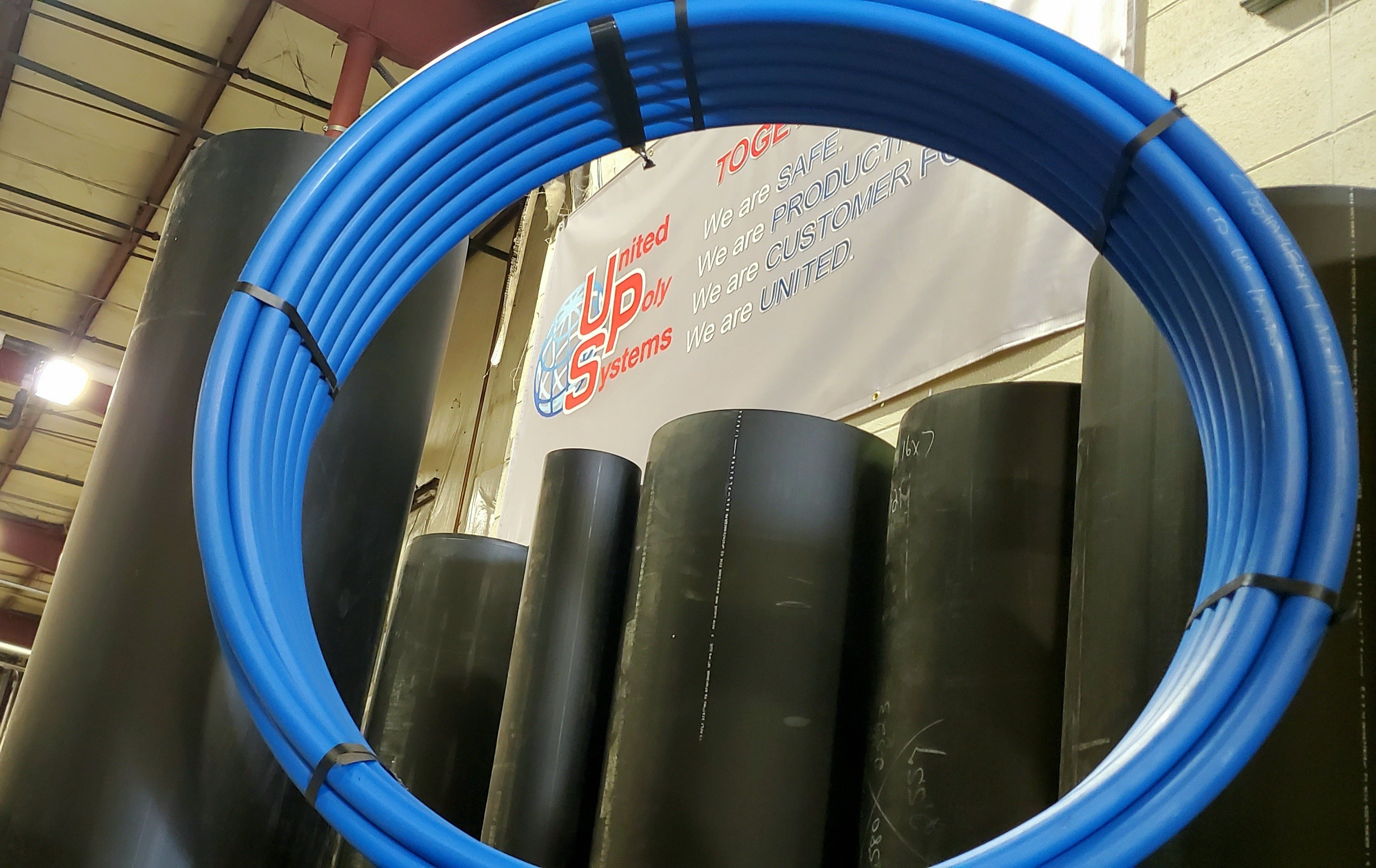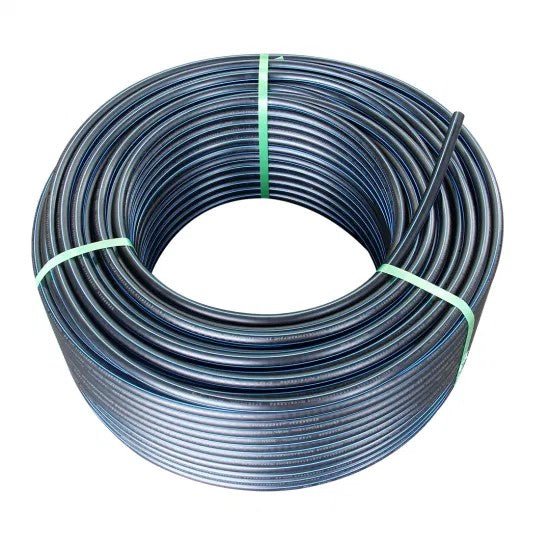The Role of Pipe Manufacturing Midland TX in Building Infrastructure
Wiki Article
Discover the Production Refine Behind High-Quality HDPE Pipe and Its Applications
The manufacturing procedure of high-quality HDPE pipes is detailed and methodical. It begins with the choice of raw products that enhance performance. Following this, ethylene undertakes polymerization to form resin, which is then formed with extrusion. Quality assurance is extremely important, making certain that the end product meets strict requirements. The trip of HDPE pipelines does not finish with production. Their applications throughout various industries expose a wider value worth analyzing.Recognizing HDPE: Residences and Advantages

High-density polyethylene (HDPE) is a flexible thermoplastic known for its toughness and resistance to different ecological variables. This material exhibits exceptional tensile toughness, making it appropriate for demanding applications. Its low-density framework contributes to a light-weight product, facilitating simplicity of dealing with and installment. HDPE likewise showcases exceptional resistance to chemicals, which reduces degradation when revealed to rough substances.
The material's low dampness absorption even more enhances its durability, making it excellent for usage in pipelines and storage space tanks. Furthermore, HDPE is resistant to ultraviolet (UV) radiation, making sure that items keep their integrity even when revealed to sunlight. Additionally, its adaptability permits for the development of complex shapes without jeopardizing strength. The eco-friendly nature of HDPE, often stemmed from recycled materials, contributes to its allure, advertising sustainable methods in production. In general, these buildings and advantages make HDPE a favored selection for various commercial and consumer applications.
Raw Material Option for HDPE Production
The option of basic materials for HDPE manufacturing is vital to verify the last product meets the wanted specifications and high quality standards. High-density polyethylene (HDPE) is largely generated from polymerized ethylene, derived from fossil gas such as natural gas or crude oil. The top quality of these feedstocks considerably influences the mechanical and thermal residential or commercial properties of the last HDPE.Ingredients additionally play a considerable duty in enhancing HDPE's efficiency, consisting of antioxidants, UV stabilizers, and colorants, which boost toughness and resistance to ecological elements. The choice process must consider not only the chemical make-up of the raw materials but also their handling characteristics to guarantee efficient manufacturing.
Moreover, the sourcing of basic materials ought to prioritize sustainability and conformity with ecological regulations, as liable methods are imperative in today's market. Ultimately, cautious basic material option lays the structure for creating top quality HDPE pipelines appropriate for varied applications.
The Extrusion Process: Shaping HDPE Pipe
The extrusion process plays a vital function in forming HDPE pipes, starting with thorough material preparation methods that ensure optimal circulation and uniformity. Just as crucial is the design of the die, which straight affects the last dimensions and surface quality of the pipeline. With each other, these factors add substantially to the efficiency and quality of HDPE pipe production.Material Prep Work Strategies
Reliable manufacturing of HDPE pipes starts with careful product preparation techniques, specifically the extrusion process. During this phase, high-density polyethylene material is very first dried to get rid of dampness, guaranteeing suitable flow characteristics. The resin is after that fed right into the extruder, where it goes through heating and melting, transforming right into a viscous state. This heating procedure is very carefully regulated to keep the material's honesty and performance. The liquified HDPE is forced via a die, shaping it into a constant pipe kind. Appropriate temperature level administration during extrusion is necessary, as it straight impacts the material's residential properties and the last item high quality. When formed, the HDPE pipe is cooled down and reduced to defined lengths, prepared for succeeding handling and applications.Die Style Relevance
Precision in die style plays an important role in the extrusion procedure of HDPE pipes. The die functions as the last shaping device, directly affecting the pipe's measurements, wall density, and surface coating. A properly designed die assurances uniform material flow, decreasing defects such as abnormalities and weak points. The geometry of the die must be enhanced to suit the specific buildings of HDPE, including its thickness and thermal actions during extrusion. In addition, the cooling price of the product as it goes through the die can markedly impact the pipe's structural integrity. Consequently, buying sophisticated die technology is essential for producers aiming to produce high-grade HDPE pipes that fulfill market requirements and customer expectations.Top Quality Control Actions in HDPE Production
Numerous aspects affect the quality of HDPE pipeline manufacturing, efficient top quality control steps are essential to guarantee consistency and integrity in the final product (custom hdpe pipe manufacturing Midland TX). Secret high quality control techniques consist of rigorous product assessment, validating that the raw polyethylene meets well-known criteria for purity and thickness. During the extrusion process, specifications such as temperature, pressure, and cooling time are carefully kept an eye on to keep dimensional accuracy and structural honestyIn enhancement, post-production testing is necessary; suppliers typically conduct hydrostatic tests to evaluate the pipe's toughness and resistance to pressure. Aesthetic examinations for surface area problems better boost top quality guarantee. Certification from relevant standards organizations, like ASTM or ISO, supplies an added layer of reputation. By implementing these complete quality assurance actions, suppliers can decrease problems, improve performance, and make sure that the HDPE pipes satisfy the certain needs of various applications, eventually bring about customer contentment and count on in the product.
Applications of HDPE Pipeline Throughout Industries
HDPE pipes are used throughout numerous markets as a result of their durability and adaptability. In water distribution systems, they ensure efficient delivery, while in wastewater administration, they give dependable services for waste transport. In addition, farming irrigation networks take advantage of HDPE's resistance to deterioration and adaptability, making it an optimal option for modern-day farming methods.
Water Circulation Solutions
A substantial variety of sectors count on high-density polyethylene (HDPE) pipelines for effective water distribution systems. Recognized for their sturdiness and resistance to rust, HDPE pipelines are commonly used in municipal supply of water networks, agricultural watering, and commercial applications. Their light-weight nature helps with simple handling and setup, minimizing labor costs and time. In addition, HDPE pipes can accommodate various pressure levels, making them appropriate for both low and high-pressure systems. American Plastics HDPE Pipe for Oilfield. The adaptability of the material allows for smooth combination right into existing infrastructure, reducing the requirement for comprehensive excavation. HDPE's resistance to chemical seeping warranties that the water delivered stays secure and clean, making it an optimal option for preserving the top quality of drinkable water throughout numerous fields.Wastewater Monitoring Solutions
Effective water distribution systems also lead the means for cutting-edge wastewater management solutions, where high-density polyethylene (HDPE) pipelines play a significant role. Renowned for their longevity and resistance to deterioration, HDPE pipelines are optimal for transporting wastewater in numerous setups. Their versatility enables for very easy setup in intricate atmospheres, minimizing the demand for considerable excavation. Additionally, HDPE's smooth indoor surface minimizes friction, enhancing flow rates and effectiveness. These pipelines are also immune to chemical leaching, making sure that contaminants do not endanger the surrounding atmosphere. Industries, communities, and therapy facilities increasingly rely upon HDPE pipes for their integrity and longevity, making them a recommended selection for contemporary wastewater monitoring systems. This versatility underscores the critical importance of HDPE pipelines across numerous applications.Agricultural Watering Networks
Agricultural irrigation networks profit substantially from making use of high-density polyethylene (HDPE) pipes, which supply effective and reputable water delivery to plants. HDPE pipelines are light-weight, making them easy to transfer and mount, while their adaptability enables various setups in diverse terrains. These pipes show outstanding resistance to deterioration, chemicals, and UV radiation, ensuring sturdiness in rough agricultural atmospheres. In addition, their smooth indoor surface lessens rubbing loss, optimizing water flow and decreasing power prices related to pumping. The longevity of HDPE pipes, frequently exceeding 50 years, adds to reduce maintenance and substitute expenses. Farmers progressively rely on HDPE pipelines to boost irrigation effectiveness and advertise sustainable agricultural practices, inevitably leading to boosted plant yields and resource conservation.
Future Fads in HDPE Pipe Modern Technology
As the need for sustainable and efficient facilities grows, advancements in HDPE pipe innovation are poised to transform various sectors. Emerging fads consist of the assimilation of smart technologies, such as sensors and IoT capacities, which promote real-time surveillance of pipeline conditions, lowering maintenance expenses and stopping leaks. Furthermore, the growth of innovative production methods, such as 3D printing, is making it possible for the manufacturing of complicated, tailored pipe styles that satisfy particular job demands.Furthermore, the focus on recycling and circular economic situation practices is driving the advancement of HDPE pipelines made from recycled products, enhancing sustainability. Enhanced jointing methods, such as electro-fusion and mechanical installations, are additionally improving installment effectiveness and reliability. The growing focus on environmental regulations is pushing manufacturers to take on greener production processes, ensuring that HDPE pipelines not just satisfy industry criteria but likewise promote a more lasting future for infrastructure development.
Frequently Asked Concerns
Exactly How Does HDPE Contrast to Various Other Plastic Products?
HDPE exceeds many other plastic products concerning durability, chemical resistance, and flexibility. Its low density and high tensile stamina make it suitable for various applications, often exceeding choices in both performance and longevity.What Are the Ecological Effects of HDPE Manufacturing?
The environmental effects of HDPE production include greenhouse gas emissions, power intake, and prospective air pollution from producing processes. Furthermore, inappropriate disposal can bring about dirt and water contamination, increasing issues concerning lasting eco-friendly effects.Can HDPE Pipeline Be Recycled?
Yes, HDPE pipes American Plastics HDPE Pipe for Oilfield can be reused. Numerous facilities accept made use of HDPE for processing, changing it right into brand-new products. This recycling adds to sustainability initiatives, reducing plastic waste while preserving resources and energy in the production cycle.What Is the Life Expectancy of HDPE Pipeline?

Just How Do Temperature Level Variations Influence HDPE Pipeline Performance?
Temperature level variants considerably influence HDPE pipeline efficiency, influencing versatility and toughness. High temperatures can lead to softening, while low temperatures might cause brittleness, eventually influencing the pipeline's toughness and viability for numerous applications in diverse settings.Report this wiki page